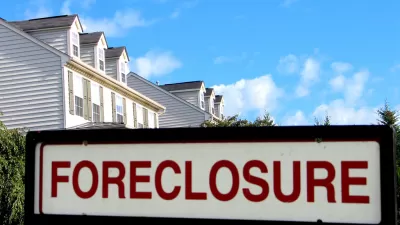The pandemic housing market may be a different beast from the recession market, but the outcomes could be eerily similar.

In the early weeks of 2008, as it became clear that millions of Americans were going to default on their mortgage payments and lose their homes to the recession, a bold idea emerged from a coalition of community development organizations.
What if a great number of these foreclosed properties could be swiftly acquired by nonprofit organizations and municipalities, which would then sell the housing stock to low- and moderate-income buyers?
It was a bold plan for diverting thousands of foreclosed homes away from private capital, back toward the people who are historically shut out of homeownership. Dubbed “the Great American Dream Neighborhood Stabilization Plan,” or GARDNS Fund, the framework called for a federal investment of $20 billion to grant in-community housers the purchasing power to obtain newly available housing and resell it affordably, with profits being funneled toward acquiring additional housing.
Instead, Congress coughed up $7 billion to fund a different plan, the Neighborhood Stabilization Program (NSP), which was festooned with red tape and cumbersome stipulations for how stabilization capital could or could not be used. “For the most part, I’d say [NSP] was not successful,” says Chris Herbert, managing director for Harvard’s Joint Center for Housing Studies. “It didn’t enable many nonprofits to quickly acquire properties in an effective way. Instead, the market for investor-purchased properties developed very fast. [Investors] became much more nimble.”
NSP wasn’t entirely a failure—it’s since evolved into a permanent program run by HUD, which still offers grants to community developers looking to add stock to their inventories. But a historic housing acquisition opportunity was missed during the program’s launch. Many of the foreclosed properties from the recession were subsumed by institutional investors like Blackstone Inc. and repurposed as market-rate rentals. This marked the beginning of a seismic shift away from homeownership, long held up as the gold standard of American lifestyles and one of the most reliable ways for a person of modest means to build wealth.
Between 2006 and 2015, 3.8 million Americans who once owned property became renters of single-family homes—a spike of more than 30 percent. Across 22 large U.S. cities, including Detroit, Tampa, and Honolulu, renters overtook property owners as the majority population. Between 2006 and 2016, the number of Americans renting their homes nationwide swelled by 25 percent. This expansion of rentals was partially enabled by the Federal Reserve’s decision to keep interest rates low: a boon for real estate investors. Stagnant wages and waning housing production exacerbated the problem, as more Americans were forced to rent and as more housing stock was added to portfolios.
For housers, the overarching question since the recession has been threefold. When will the next foreclosure crisis occur? When it happens, how can more foreclosed housing stock be recirculated back into the hands of affordable housing stewards? And will housers be ready for the next crisis?
The New Storm
The early economic shock waves of the COVID-19 pandemic appeared to mark the next cataclysm ...
FULL STORY: Pandemic Housing Market Is Not Like the Great Recession’s

Trump Administration Could Effectively End Housing Voucher Program
Federal officials are eyeing major cuts to the Section 8 program that helps millions of low-income households pay rent.

Planetizen Federal Action Tracker
A weekly monitor of how Trump’s orders and actions are impacting planners and planning in America.

Ken Jennings Launches Transit Web Series
The Jeopardy champ wants you to ride public transit.

Crime Continues to Drop on Philly, San Francisco Transit Systems
SEPTA and BART both saw significant declines in violent crime in the first quarter of 2025.

How South LA Green Spaces Power Community Health and Hope
Green spaces like South L.A. Wetlands Park are helping South Los Angeles residents promote healthy lifestyles, build community, and advocate for improvements that reflect local needs in historically underserved neighborhoods.

Sacramento Plans ‘Quick-Build’ Road Safety Projects
The city wants to accelerate small-scale safety improvements that use low-cost equipment to make an impact at dangerous intersections.
Urban Design for Planners 1: Software Tools
This six-course series explores essential urban design concepts using open source software and equips planners with the tools they need to participate fully in the urban design process.
Planning for Universal Design
Learn the tools for implementing Universal Design in planning regulations.
Heyer Gruel & Associates PA
Ada County Highway District
Institute for Housing and Urban Development Studies (IHS)
City of Grandview
Harvard GSD Executive Education
Toledo-Lucas County Plan Commissions
Salt Lake City
NYU Wagner Graduate School of Public Service


























